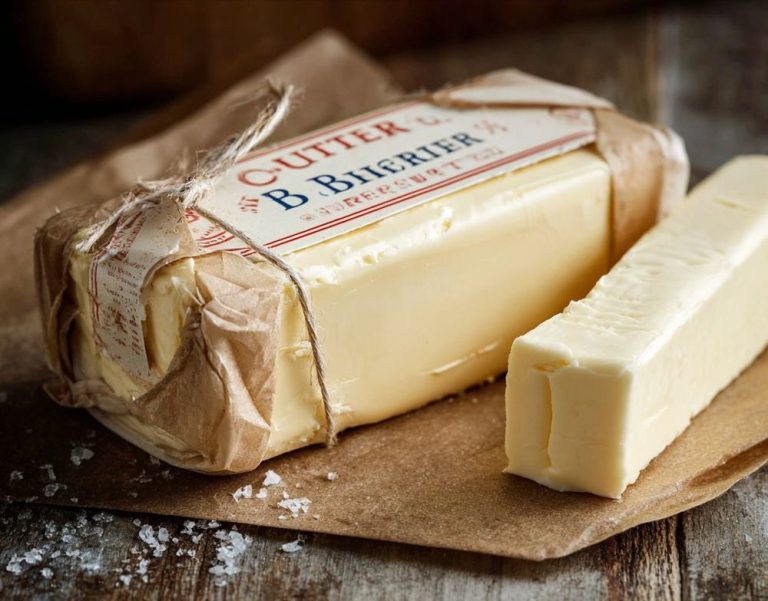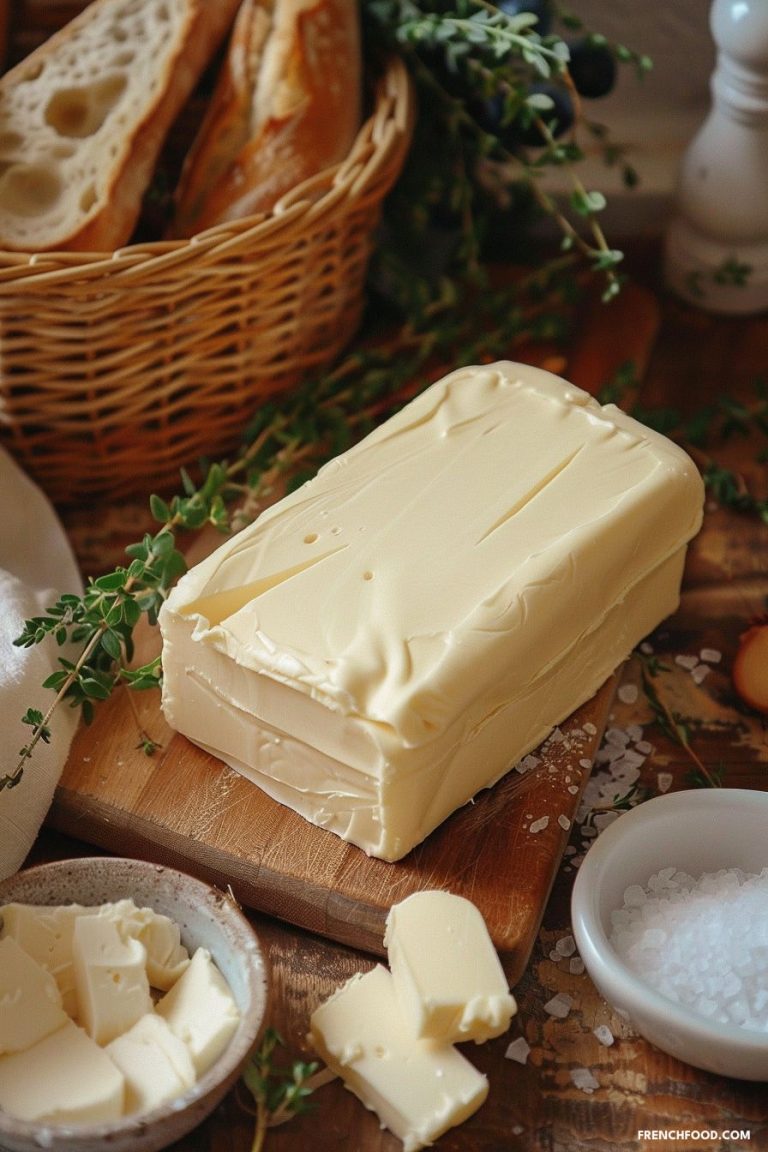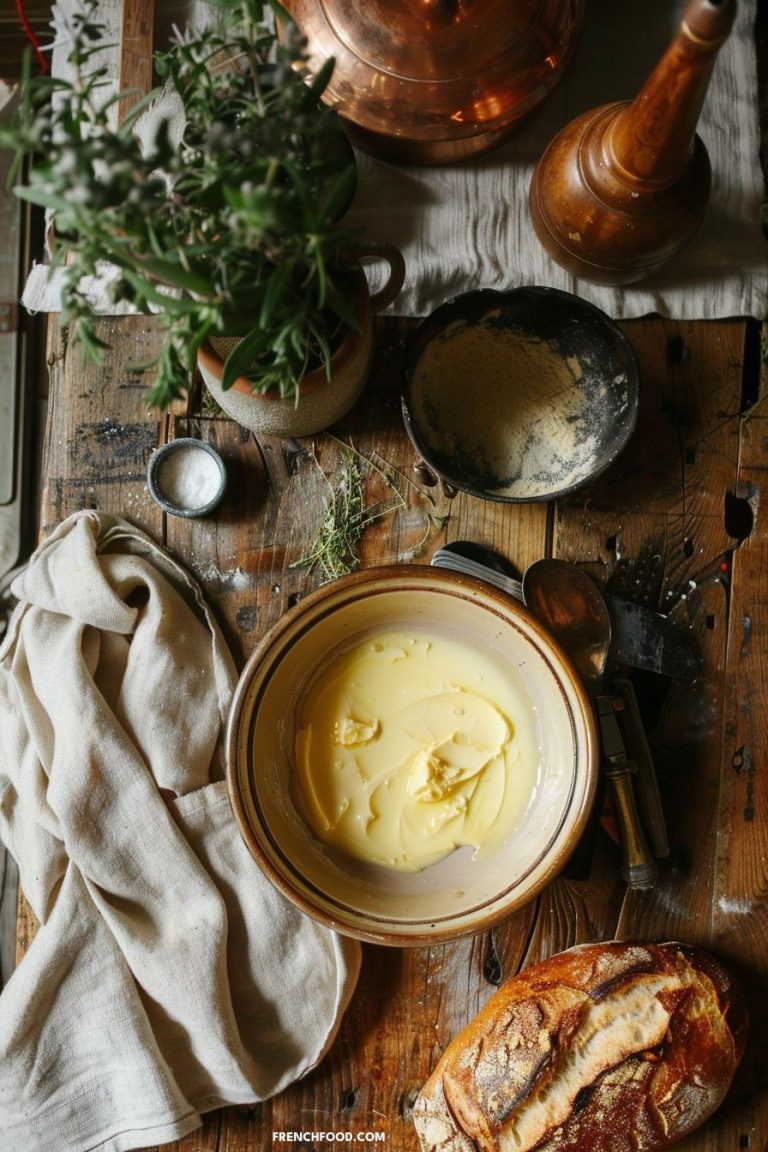15 Types of French Butter to Know
We may earn a commission through all links on this website. As an Amazon Associate, we earn from qualifying purchases.French butter comes in a variety of types, each unique in its flavor profile and use. The two main categories are sweet cream butter (beurre doux) and cultured butter (beurre de baratte). Cultured butter is renowned for its tangy, complex flavor, whereas sweet cream butter has a milder, more straightforward taste.
Apart from these, there are a few more types of butter used for different purposes:
Beurre cru – Raw butter
Beurre cru is an unprocessed, raw butter that retains all the natural flavors and nutrients of the cream. Its rich, creamy texture and slightly tangy taste make it a prized ingredient in French cuisine.
Beurre fin – Fine butter
Beurre fin refers to high-quality, artisanal butter made with exceptional care and attention to detail. These butters often come from specific regions of France and have a luxuriously smooth, velvety mouthfeel.
Beurre doux – Unsalted butter
Beurre doux is a classic French unsalted butter that allows the pure, sweet flavor of the cream to shine. It is a versatile ingredient used in both savory and sweet dishes, prized for its clean, unadulterated taste.
Semi-salted butter
Semi-salted butter contains a moderate amount of salt, adding a subtle savory note that complements the natural sweetness of the cream. It is a popular choice for everyday cooking and baking in French kitchens.
Beurres salés – Salted Butter
Beurres salés are French butters that have been intentionally salted, often with large, crunchy salt crystals. The added salt enhances the butter’s flavor and helps preserve its freshness, making it ideal for spreading on bread or using in sauces and pastries.
Beurres allégé – Low-fat butter
Beurres allégé are reduced-fat butters that maintain the rich, creamy texture and flavor of traditional French butter, but with a lower calorie and fat content. They are a healthier alternative to enjoy the taste of butter without the full-fat indulgence.
Beurre sec – Dry butter
Beurre sec is a type of French butter that has been dried to remove excess moisture, resulting in a firmer, more concentrated flavor. This makes it well-suited for baking and cooking applications where a higher melting point is desirable.
Beurre de baratte – Churned butter
Beurre de baratte is a traditional French butter made by hand-churning fresh cream. The slow, labor-intensive process results in a butter with a unique, slightly grainy texture and a rich, complex flavor profile.
Beurres AOP – Protected designation butter
Beurres AOP are French butters that have been granted a protected designation of origin (Appellation d’Origine Protégée), ensuring they are produced in a specific region using traditional methods. These butters are highly prized for their exceptional quality and terroir-driven flavors.
Low-fat butter
Low-fat French butters are made with a reduced amount of fat, typically around 40-60% fat content, compared to the standard 80% fat in regular butter. They offer a healthier alternative while still providing the characteristic flavor and texture of traditional French butter.
Organic butter
Organic French butters are made from the milk of cows raised on organic, pesticide-free pastures. These butters are prized for their pure, unadulterated flavor and the ethical, sustainable farming practices used in their production.
Spreadable butter
Spreadable French butter are specially formulated to have a softer, more pliable texture, making them easy to spread directly from the refrigerator. This convenience factor makes them a popular choice for everyday use.
Margarine
While not a true butter, margarine is a plant-based alternative that has been a part of the French culinary landscape for decades. It is often used as a lower-cost substitute for butter in certain applications, though it lacks the rich, creamy flavor of its dairy-based counterpart.




